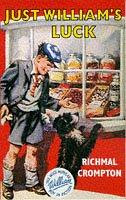'if there is a substitute for love it is memory'

Skippy Dies
by Paul Murray
No need to worry about spoilers on this one then. Irish author Paul Murray even places the titular death at the very beginning of this vast and multi-stranded novel. Let there be no doubt: Skippy does indeed die. But it's not as simple as that of course. How could it be in a novel that looks at a group of school children and their teachers in an elite religious school in Dublin and includes everything from string theory to fatal donut eating contests. The 600+ page book is split up into three separate volumes, collected in a slipcase and whilst the first is easily the most enjoyable the whole book is a rollicking ride that displays some extraordinary stylistic flourishes along the way.
But let's meet a few of the boys. Skippy is Daniel Juster, his nickname coming from his buck teeth and the fact that some people think that the noise he makes when speaking is not dissimilar from that of the famous bush kangaroo. Those raging hormones I mentioned earlier come into play when Skippy spots Lori, from the local girl's school playing Frisbee. This sets him on a collision course with Carl, Seabrook's resident drug dealer and psycho, who has his own wishes for Lori as well as running a tidy diet-pill-scam operation with henchman Barry. The most colourful character initially has to be Ruprecht Van Doren who arrived at Seabrook 'like a belated and non-returnable Christmas gift' after both his parents were lost on a kayaking expedition on the Amazon.
Apart from being a genius, which he is, Ruprecht does not have all that much going for him. A hamster-cheeked boy with a chronic weight problem, he is bad at sports and most other facets of life not involving complicated mathematical equations.
'Fascinating,' Ruprecht muses to Skippy. 'The whole thing seems to work on a similar principle to a supercollider. You know, two streams of opposingly charged particles accelerated till they're just under the speed of light, and then crashed into each other? Only here alcohol, accentuated secondary sexual characteristics and primitive 'rock and roll' beats take the place of velocity.'
On the game-over screen, from his mist-shrouded body, you see Djed's soul is fluttering upwards. Up and up it goes, a dancing ball of light, till it's reached the title screen, to bob around the princess where she waits in her glittering cage of ice. Around and around her it dances. And suddenly you think:
His soul.
You sit up.
A soul doesn't weigh anything. It doesn't have a size.
On the screen the princess's eyes twinkle at you.
The dimensions are there at every point, too small for us to see them. But if you were just a soul -
That's when you see the air is full of little doors! All around the room, they're floating there everywhere, and when you scramble up to peep through them, you can see what's on the other side! Each one leads to a different time and place! Here's you and Ruprecht, in the basement, working on the Invisibility Gun -
Here's the Hallowe'en Hop , when the things she said on her doorstep tonight do not exist yet, and you're realizing that Lori is the exact shape of what's been missing from your arms -
The way in which these disparate elements are brought together at the close of Hopeland is a triumph and one of the most enjoyable set-pieces I have read recently. It is also the reason why the book feels to have lost its way slightly in the following two sections. Like trying to comprehend the 11 dimensions of M-theory (a theory so complex that there isn't even a consensus on what the M stands for) there are times when there is too much going on and the structure falls apart. Having said that, Murray manages to keep up the energy and interest throughout the book's significant length (something I'm sure made easier by reading it as three separate books rather than the single bound proof that I read) and also pulls that clever trick of making a comic novel tug on the heart strings occasionally, where even the most ridiculous or repulsive of characters can extract the reader's sympathy. In another section Ruprecht points to the theory of Asymmetry as a means of explaining the unfairness of the school environment, a place where 'Intelligent students get wedgies, instead of being respected as future leaders of their society. You can't get what you want, but someone else, who doesn't want it, has it in spades.' Some authors too are blessed with more success than talent and Murray scores enough hits with this bold, ambitious novel to explain away the existence of Jeffrey Archer.






0 comments:
Post a Comment